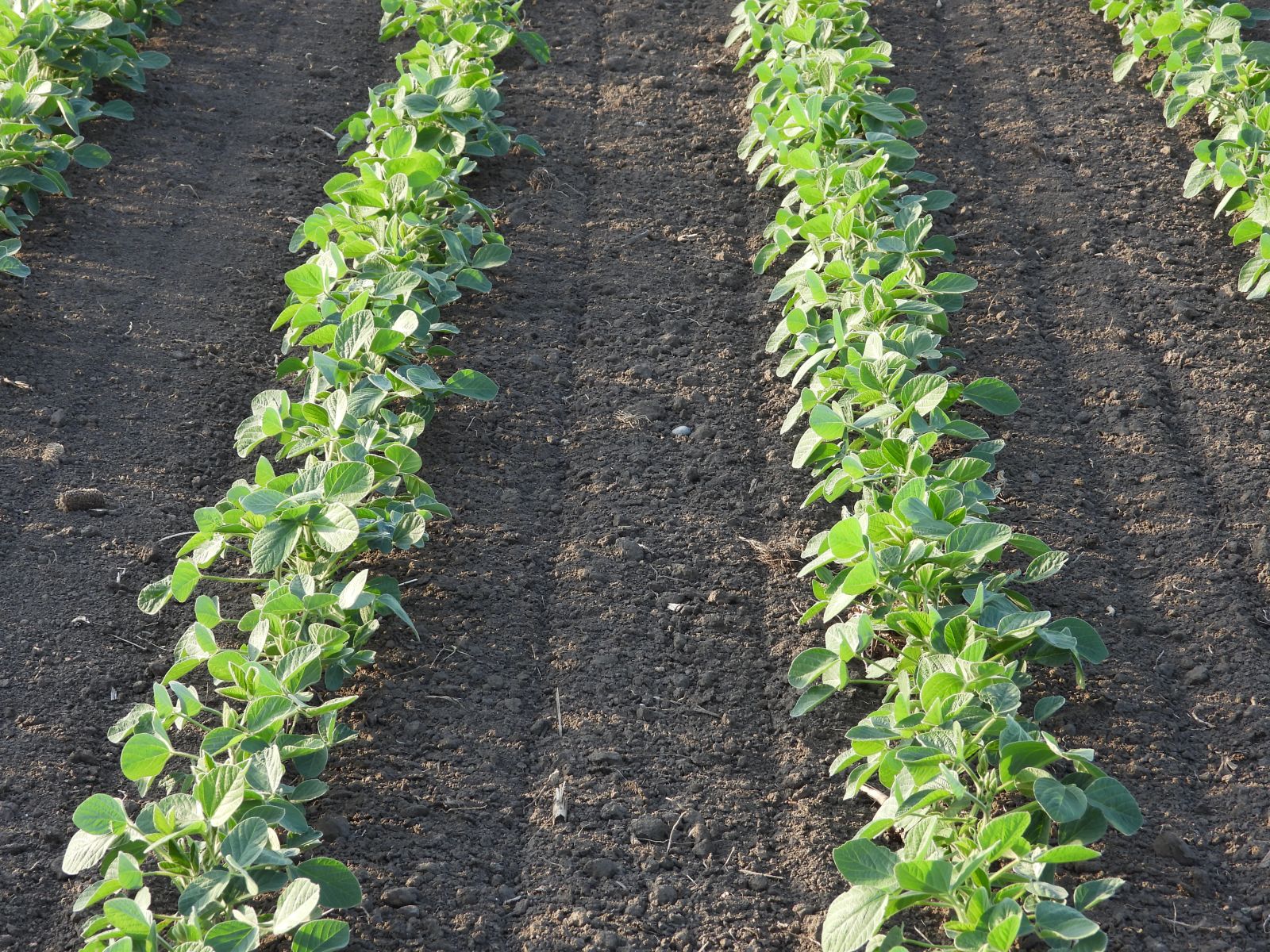
I was a guest on AgWeb's Markets Now this morning with Michelle Rook. We discussed the latest trends in the agricultural markets, focusing on soybeans and corn, as well as the cattle market and gold. Watch the full interview here.
Michelle Rook: Welcome to Markets Now. I'm Michelle Rook with Darin Newsom, Senior Market Analyst with Barchart. A quiet morning in the grains. We've been on both sides of the steady already. Livestock futures, though, are seeing some pretty significant losses. Darin, let's talk about the quiet nature of the market here this morning, a day after President Trump tweeted out or put on his social media post that he was going to be talking with President Xi at the APEX Summit about them buying soybeans. The exuberance of that did not last very long in the market, did it?
Darin Newsom: No. It shouldn't. What does continue to surprise me is these algorithms that are supposed to be so hyper-intelligent, they call it artificial intelligence, get triggered by the same nonsense, I'll put it that way, every time. Every time. US president sends out something, and the algorithm programs, they're triggered. There's no reality to it. Could China buy? Absolutely, but they have other reasons to rather than the US president going and talking to President Xi, and there's nothing that's going to happen in those conversations.
If we look at it, we saw the National Soybean Index post its lowest monthly close at the end of September since, what was it, August 2020. We know there is ample supplies in relation to demand. We also know that when the US government is shut down, and it tends to be under this administration, it tends to happen more frequently than others, when the US government gets shut down and there's no reporting of sales and everything can be done behind the curtains, it never gets exposed, yes, it would make sense for China to step in and buy some secondary supplies.
US isn't going to become its main supplier. We saw a couple of weeks ago where the system was manipulated, where China got Argentina to sell it 10 cargoes for the timeframe that's usually dominated by the United States. Yes, China's obviously looking for a few soybeans here and there to fill its needs until Brazil's next harvest. It would make sense with the spotlight off and no reporting being done, yes, step in and do a little buying of US soybeans.
Michelle: For sure. We're not getting, as you mentioned, any flash sale reports here out of Foreign Ag Service. China did this back in 2018, the last time that we had the government shut down, didn't they? They came in and bought under the radar.
Darin: Yes. Again, it makes sense. Politics are politics, but business is still business. China hasn't survived all these eons by being poor on the business side. As the old saying goes, Marco Polo was lucky to leave with the shirt on his back when he visited China. They've been doing this for centuries. Yes, it would make sense. Again, I don't think it's anything that's going to dramatically change the US market, but I do think some business can be done. It has absolutely nothing to do with the US president and everything he says and tweets and so on and so forth.
Michelle: We mentioned the government shutdown, and we don't know how long that's going to last, but right now, we have hardly any information coming out of USDA. The October WASDE is being kicked down the road here a bit. Obviously, we have a little bit of uncertainty in the markets because we don't have any news. What is the market going to focus on, or what can we use to trade here?
Darin: Gee, it's too bad we won't have government numbers. I'm torn up about that. What we could actually use is markets themselves.
Michelle: Spreads, basis, what are they telling us right now?
Darin: What we see is basis is weak for both corn and soybeans. We expect that because it's harvest time, so we have more supplies coming in. We can look at the Nov-Jan soybean future spreads, and we can see producers are selling those soybeans, and there's not a great deal of demand on the corn side. Yes, there is some corn being sold. We do have basis that is weak, but the Dec-March spread isn't as weak, and certainly, the March-May spread is not weak. We know that there's still expected to be solid demand, that the commercial side's lining up with a little bit more concern going out to planting season, of where it's going to find supplies.
Everything we need to know is in the market. All that really comes from the outsiders, for those folks who honestly believe that USDA runs every market and that traders cannot function, are not smart enough to actually be able to read and understand what the markets are saying, that all information, all control has to come from USDA. I've always fought against that. I think it's one of the dumbest things this industry continues to show.
Michelle: One example of that, as far as what the spreads and the basis were telling us bore itself out when we got the Tuesday quarterly stocks report, which was on corn, 200 million bushels above ending stocks from the last report. The way the basis and the spreads were acting, we already knew that, didn't we?
Darin: Yes. If we go back to what the National Corn Index was saying, at the end of August, we could see the type of stocks levels that we had on hand. Again, it doesn't tell us the bushels, and the bushels are simply made-up numbers anyway. What I find humorous, I wasn't really watching it that closely, but when you say it was 200 million bushels off, there's the old tradition in corn, and I call it the 300 consistency, where I did have to talk about these things.
USDA's, particularly its September 1 guess, it always seemed to be either 300 million bushels more or 300 million bushels less. It was just a consistency to these reports. Now, what tends to happen and what everyone gets all worked up about is that some of the new crop, some of the early harvested new crop comes in, and it's added to, and so it gets everybody's feathers all ruffled. The reality is, why shouldn't they count? Those were stocks in store as of September 1. Why shouldn't they count? Why shouldn't they be counted?
Michelle: The other thing we should talk about is the fact that we are trading harvest pressure. The harvest is moving very quickly throughout the Midwest. You're going to have some hedge pressure at times on this market, aren't you?
Darin: Yes. Usually, what we've been seeing is most of the hedge pressure comes in right ahead of the weekend. We get the usual Friday business and then a little bit coming out of the weekend on Monday. Weather has been almost ideal across much of the US plains and Midwest, warm, dry, hot, windy, and so on, allowing, as you said, harvest to progress rather quickly.
We are going to get these bushels in-house, it seems like. At this point, it seems like soybeans are being sold. As is traditional in the United States, soybeans are being sold, corn is being held, which is one of the reasons why there is some concern on the commercial side as we head out to next spring, the planting season, when there's a fear that it could be a little bit more difficult to get those corn supplies to meet demand.
Michelle: Let's also talk about what some of the outside markets are telling us right now. Gold just keeps clipping off these record highs. What is that telling us?
Darin: I think there's three reasons for this. Obviously, there's the fear of ongoing inflation. Chairman Powell talked about it at the end of the September FOMC meeting. There's still a great deal of concern about inflation and ties that into interest rates. What's going to happen with interest rates? We know the US president wants lower rates. Chairman Powell's not so sure. Gold is that safe haven market that keeps finding buying interest despite the fact it's at all-time highs from central banks and long-term investors around the world.
The third is, I think, a growing lack of confidence in the United States. Again, we can see this by the number of central banks that continue to buy gold and the fact that sometimes the dollar pops up, sometimes it settles down, but there's getting to be less interest in the US dollar and more interest in gold, again, as a safe haven market since you really can't rely much on the United States these days.
Michelle: The government shutdown certainly didn't add any certainty. That's probably part of it right now, too, isn't it?
Darin: Yes, correct. We've been seeing this for months, if not years, particularly here, recently, the gold that just seemed to caught another level, caught another gear. Yes, you're absolutely right. That's most likely tied to the fact that it was going to be a shutdown than the fact it actually shut down.
Michelle: The cattle market seeing some pretty significant losses here today. Cash trade early this week is lower. The cutout values have lost like $50 off their highs. Is that what we're trading here, do you think?
Darin: I think on the cash side, yes. We've been talking for quite some time that this market was getting a little top-heavy, that we had to keep a close eye on the cash, and it certainly seems to be backing off. Boxed beef is one of those things. Unfortunately, these are USDA-reported prices, and so obviously, they come with an asterisk attached to them anytime that they're quoted. The reality is cash markets have been backing off, we're starting to see some pressure in the futures market.
We've seen the non-commercial side, we've seen investors ride this thing for the last couple of years and they've done quite well, but at this point, with the cash market seemingly starting to break, investors could start to look for other markets to roll over into some that have a more bullish supply and demand picture than basically what cattle had a couple years ago, and now they might be looking for other avenues.
Michelle: The funds were so long in that market, it looks like maybe they finally decided they're going to take some money and liquidate, huh?
Darin: I think so. Yes, and it would make sense at this point.
Michelle: No doubt. All right. Thanks for joining us, Darin Newsom, who is Senior Market Analyst with Barchart. That is Markets Now.







